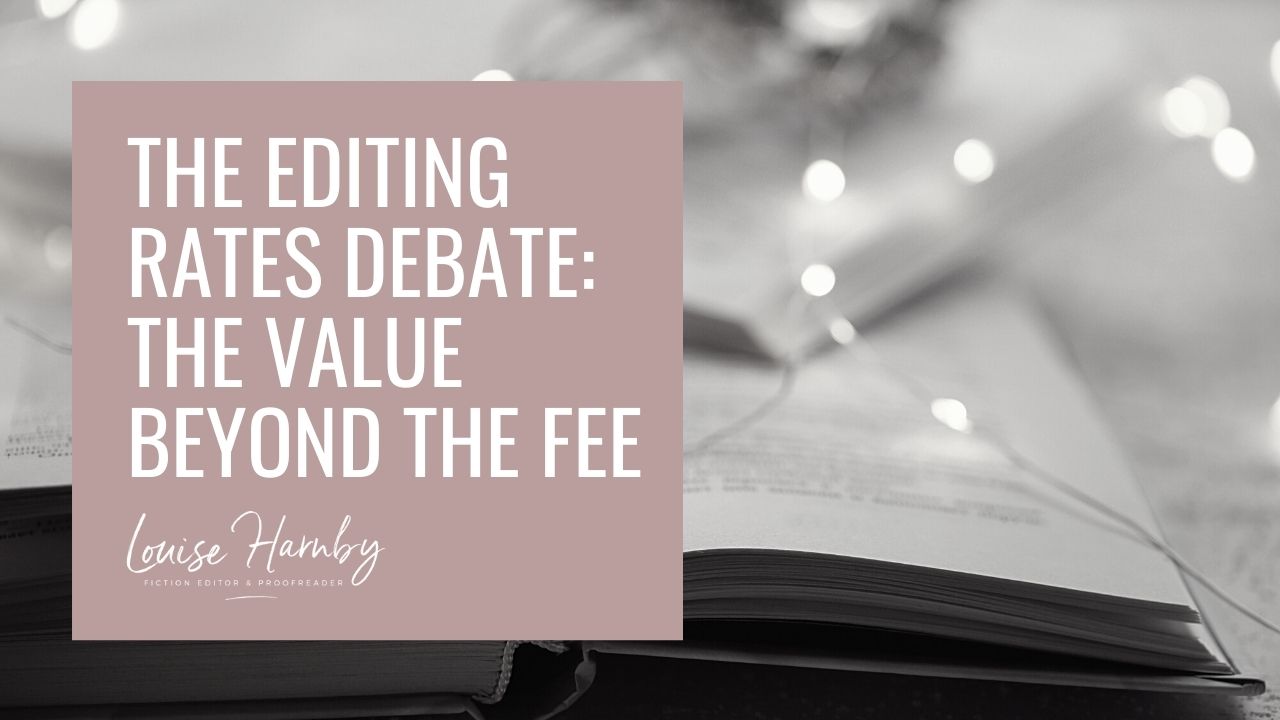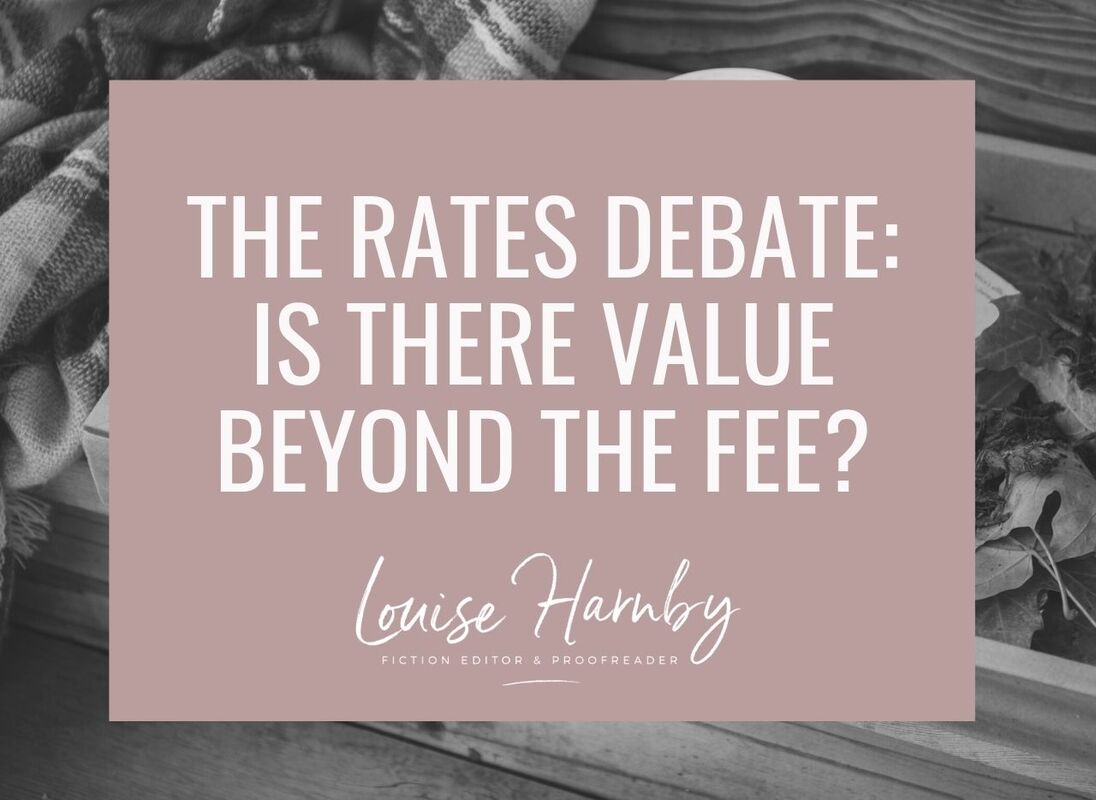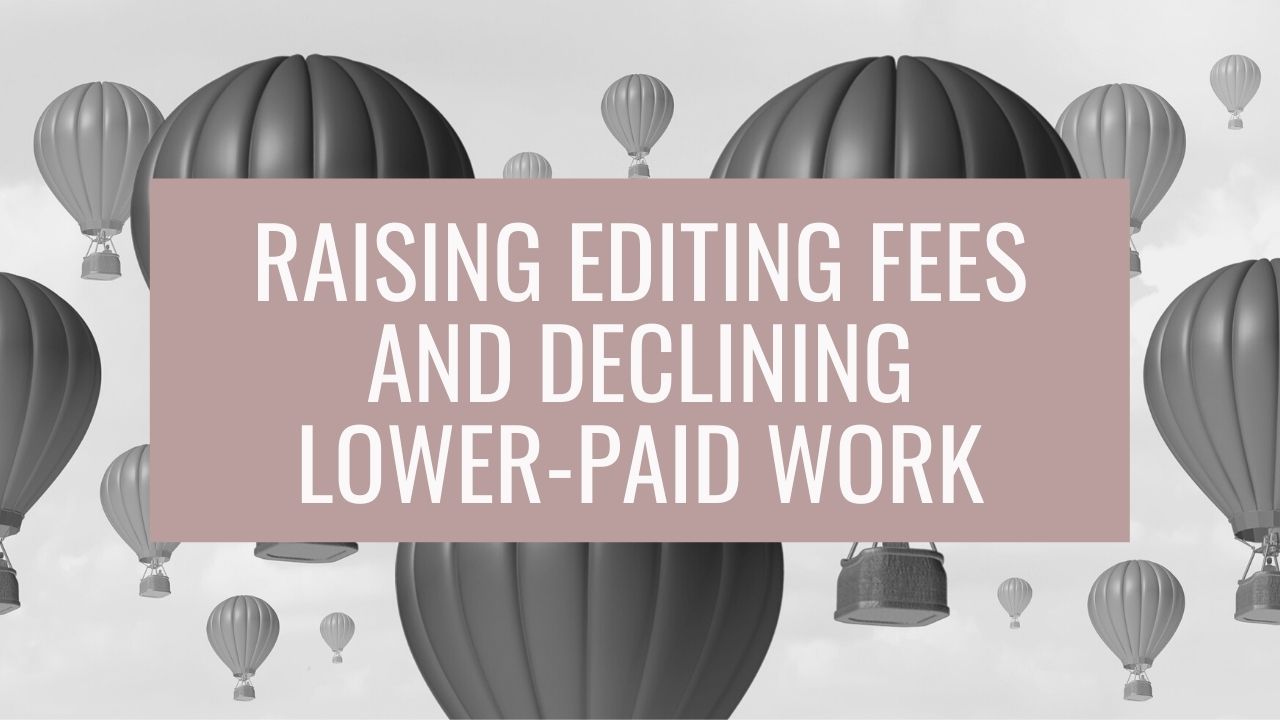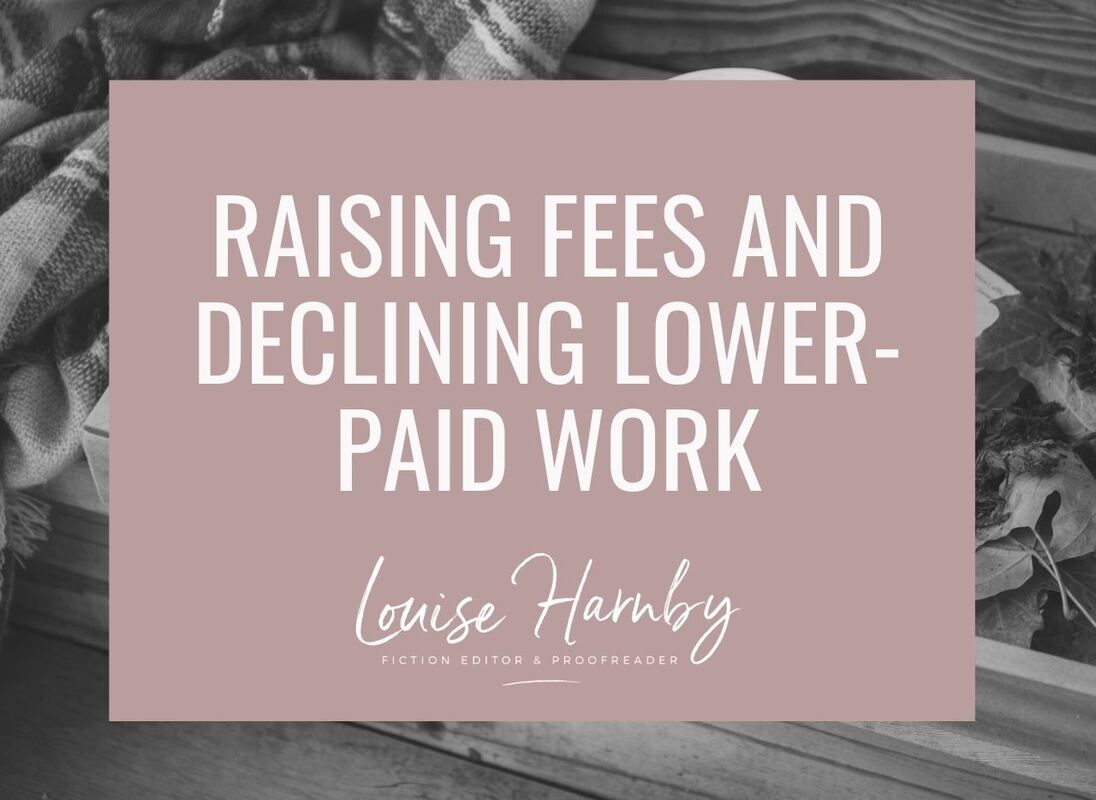|
What's a fair price for proofreading or editing? One of my concerns when discussing rates is that the value of a particular client to the freelance editor or proofreader’s business is sometimes overlooked.
Deciding not to accept a particular editing rate might be the right choice for me but the wrong choice for you, or vice versa. That’s because our circumstances are different and because businesses aren’t static.
Terms such as ‘too low’ or ‘race to the bottom’ can be problematic because they’re used as if editorial business ownership is taking place in the now – as if the business, and the fees which that business owner accepts, are absolutes and somehow unrelated to what’s gone before or what will happen in the future. I believe that business ownership is a journey – that the work I do, and the marketing I carry out to acquire that work, is fluid. The decisions I made and the actions I took three years ago affected the work I was doing and the fees I was charging/accepting at that time; but they ALSO affected the work I’m doing and the fees I’m charging/accepting now. This fluidity means that the way we find value in a client extends beyond the rate. Time for a case study to nail things down … Case study: The packager and the proofreader 2012 Ellie’s a proofreader. Work: She’s completed her training and become a member of her national editorial society. She’s technically excellent at her job, but she has no clients and very little experience of paid work. Marketing: She has a website but the portfolio and testimonials pages are sparse. And, anyway, her SEO is, as yet, so undeveloped that she’s barely discoverable online. She gets in touch with a packager who regularly hires proofreaders who are members of her national professional society. Clients: To the packager, she’s a great fit. She has the skills they want and she has the space in her schedule. To academics, students, businesses and independent authors searching for a proofreader, she’s invisible. Even if she were visible, she appears less experienced (less interesting, we might say) than other proofreaders touting their services. Rates: The agency offers regular work, and the rate is £13.50 per hour. ‘That rate is woeful,’ says one of the more experienced colleagues in her network. ‘That’s so low it’s an insult,’ says another. ‘Accepting that is encouraging a race to the bottom,’ says yet another. Action: Ellie accepts the work anyway – she has a cunning plan! 2014 Ellie’s still a proofreader. Work: In the past two years, she’s done a book a month for that packager. Now, from that packager alone, she has 24 academic book titles in her portfolio – all of them published by international scholarly publishers, and some of them authored by big names in the academic community. She’s also contacted several academic presses whose rates are a little higher than the packager’s, but only by a few pounds. Marketing: She’s been busy over the past two years.
Clients: Two years ago, Ellie wasn’t discoverable to anyone but the packager and the publishers. Things have changed, though. It’s been a slow burn, but her down-the-road thinking has led to a larger number of direct hits on her website. There’s still a long way to go, but when clients visit her website now, they see the following:
Rates: A few of the clients who’ve found her direct have accepted the rates she offered. These are sometimes as much as double the rate she’s earning from the publishers and packager. This inspires her to continue her marketing activities and increase her visibility to these client types so that she might shift her customer base as her business develops. Ellie’s still not visible enough to fill her schedule with these better-paying clients. She continues to accept work from the publishers and the packagers. ‘Those rates are an insult to someone with your experience,’ cry some of her colleagues. Action: Ellie accepts the work anyway – she’s not phasing out the publishers and the packager until she’s phased in enough higher-paying clients to replace the workflow and the income it provides. 2016 Ellie’s still a proofreader. Work: Over the past two years, she gradually reduced the work for the packager, finally stopping it altogether at the end of 2015. She’s still taking some work from her early publisher clients, though much less than in 2012–14. That’s because she’s been working for four better-paying presses whose rates are what she’d define as ‘middle-of-the-road’, though nowhere near as high as the fees she can set when she works directly for authors and students. Her increasing visibility has put her in a position where she receives several direct requests to quote per week. She’s noticed that some academic publishers are even asking their authors to source and pay for their own proofreading, so she’s glad she’s focused on making herself discoverable to these clients. Marketing: Even though Ellie’s had a full schedule for several years, she’s continued to focus on what she wants down the road in terms of client types and income. The bread-and-butter work provided by the publishers and the packager have enabled her to concentrate large chunks of her marketing time on what she wants in the future without having to worry excessively about where today’s work will come from.
Clients: Ellie appears to clients as an experienced proofreader with professional qualifications. They think she’s on their wavelength because of the valuable resources she provides for free. The fact that she’s worked for international academic publishing houses gives them confidence that she knows how to follow a brief and work on complex materials to a high standard. If she wasn’t capable, those presses wouldn’t have hired her repeatedly, would they? Rates: Ellie no longer accepts work below £20 per hour, although she aims to earn an average hourly rate of £28. She can afford to make this decision because of the balance between her later-acquired, medium-paying publisher clients (who provide her with a stable workflow) and the higher-paying independent clients who contact her direct. On an online forum, a new entrant to the field posts that she’s been offered proofreading work from a packager at a rate of £15 an hour. Does Ellie say, ‘That rate’s woeful. It’s an insult. Accepting it would be encouraging a race to the bottom’? Nope. She says, ‘Is there value in this work beyond the fee being offered?’ She goes further:
The business journey Ellie’s business in 2012 looks different to Ellie’s business in 2016. Her client base has shifted, her income has shifted, the base price she’ll accept has shifted, her work stream has shifted and her visibility has shifted.
There is value beyond the rate. Whether you take advantage of that value will depend on your particular circumstances, of course. My advice to new starters is to be cautious when listening to the rates debate. It’s easy for seasoned professional editorial freelancers to advise against accepting this or that fee simply because they’re in a position to command better fees. In fact, offering advice on what’s an acceptable price is almost impossible unless we understand an individual freelancer’s circumstances, requirements and access points to the industry. Fees, like any other aspect of a business, need to be considered in the context of an overall business plan, and over a time frame that extends beyond the now. More resources
Louise Harnby is a line editor, copyeditor and proofreader who specializes in working with crime, mystery, suspense and thriller writers.
She is an Advanced Professional Member of the Chartered Institute of Editing and Proofreading (CIEP), a member of ACES, a Partner Member of The Alliance of Independent Authors (ALLi), and co-hosts The Editing Podcast. Visit her business website at Louise Harnby | Fiction Editor & Proofreader, say hello on Twitter at @LouiseHarnby, connect via Facebook and LinkedIn, and check out her books and courses.
4 Comments
In this article, I consider several approaches to increasing editing income and declining lower-paid work. These respect editors' differing circumstances, client bases and business goals.
How to increase editing and proofreading income
Taking annual action to increase income from freelance editorial work is simply good business practice. Earnings need to keep up with cost-of-living increases else our editorial businesses could fail. Even if they don't fail, the decline in profitability could have a significant impact on our lifestyle and well-being. What we earn is determined by the following:
Increasing our earnings is not always straightforward, though. You or I might think our desired rate increase is entirely justified (for example, because of inflation). However, what you or I think is not the issue. Any change to a pricing model must consider the client’s response for the simple reason that the client might not be prepared to pay. Remember:
Decisions about what to set or accept therefore need to be carefully planned. Avoiding knee-jerk thinking If a colleague states that they’ve decided to no longer edit for ‘low’ rates, by all means congratulate them on their business decision. Don’t assume, though, that their decision is the same one you should be making. Before you impulsively follow their lead, ask yourself the following questions:
In other words, don’t feel compelled to decline work just because your colleagues deem what’s on offer as a bum deal. Their current circumstances might be very different from yours. Not everyone can afford to be unemployed, and the choices available to a mature freelance-business owner may be very different from those on offer to the beginner. Case study – the price-accepter When you’re a price-accepter, the process for managing rates is usually one of the following:
In the first five years of owning my editorial business, I was almost exclusively a price-accepter. My main clients were publishers and packagers. Returning to the knee-jerk-avoidance issues:
During that phase, I was a negotiator and a phase-outer. I’d take the work to ensure a full schedule. I gained experience and testimonials, and I expanded my portfolio – all great marketing tools. As I acquired better-paying clients, I phased out the 15-pounder, then the 18-pounder, then the 20-pounder, and so on. It was a gradual process. In 2017, my marketing strategy has paid off. I’m highly visible. I’ve got the experience, the testimonials and the portfolio to make me interesting to enough non-publisher clients that I can decline a price and walk away. I’ve moved from negotiation and phasing-out to responding with a flat refusal. Case study – the price-setter When you’re a price-setter, the process for managing rates is usually one of the following:
In the first five years of owning my editorial business, I had few clients for whom I set the price, and I was still developing my visibility. If there was space in my schedule, I’d try to fill it by negotiating and offering phased-in fee increases for regular clients. In 2017, things have changed. I’m a flat-increaser. If the client doesn’t like the fee on offer, no problem. I thank them for their interest and wish them luck. Returning to the knee-jerk-avoidance issues:
As I hope the two examples above show, the approaches we take can vary over time and depend on individual circumstances. There’s no one-size-fits-all response. Some additional thoughts
Managing rates is a journey Increasing earnings isn’t about knee-jerk reactions. Rather, it’s a journey. Depending on your circumstances, you might handle things one way now, and another way further down the road. Whether you buckle, negotiate, phase in/out, or make flat-out decisions will be based on your circumstances. There’s no one, true way to do it and there’s no shame in any of those choices as long as they’re done in relation to an analysis of your business needs and goals. More information
Louise Harnby is a line editor, copyeditor and proofreader who specializes in working with crime, mystery, suspense and thriller writers.
She is an Advanced Professional Member of the Chartered Institute of Editing and Proofreading (CIEP), a member of ACES, a Partner Member of The Alliance of Independent Authors (ALLi), and co-hosts The Editing Podcast. Visit her business website at Louise Harnby | Fiction Editor & Proofreader, say hello on Twitter at @LouiseHarnby, connect via Facebook and LinkedIn, and check out her books and courses. |
BLOG ALERTSIf you'd like me to email you when a new blog post is available, sign up for blog alerts!
TESTIMONIALSDare Rogers'Louise uses her expertise to hone a story until it's razor sharp, while still allowing the author’s voice to remain dominant.'Jeff Carson'I wholeheartedly recommend her services ... Just don’t hire her when I need her.'J B Turner'Sincere thanks for a beautiful and elegant piece of work. First class.'Ayshe Gemedzhy'What makes her stand out and shine is her ability to immerse herself in your story.'Salt Publishing'A million thanks – your mark-up is perfect, as always.'CATEGORIES
All
ARCHIVES
July 2024
|
|
|
|



















 RSS Feed
RSS Feed





